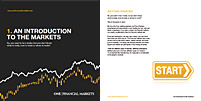

Oil Has Another Monthly Loss for July, Bulls Hedge on OPEC Meet
By Barani Krishnan
Investing.com -- For the oil market, the fear of OPEC is greater than the fear of an implied U.S. recession.
U.S. crude rose for a third time this week but still settled below the key $100 per barrel level while Brent remained above the three-digit mark amid concerns about what global oil producing alliance OPEC+ might do with output quotas when it holds its August meeting next week.
As trading for July closed, New York-based West Texas Intermediate, or WTI, posted a monthly loss of 7.2%, after June’s 7.4% slide.
For the day and week though, WTI was up.
The U.S. crude benchmark settled Friday's session up $2.20, or 2.3%, at $98.62 for its September delivery contract. For the week, September WTI was up 4.1%, after a decline of 13% over three preceding weeks.
London-traded Brent for October delivery showed a decline of about 4.5% for July, after June’s 5.7% drop.
For Friday itself, the global crude benchmark settled up $2.14, or 2.1%, at $103.97.
For the week, October Brent was up 5.7%, extending last week’s 2.7%. Prior to that, Brent had fallen a cumulative 17% over five weeks.
Oil’s rise on the day and week came as attention turned towards OPEC+’s Aug. 3 meeting, which will decide on the group’s September production.
Sources within the 23-nation OPEC+ told media on Friday that the alliance might hold production unchanged or raise it only slightly for September — despite arduous efforts by the Biden administration to cajole the Saudi-led and Russian-supported alliance in boosting output appreciably.
“All eyes are now on that meeting which will take place against the backdrop of lower economic growth forecasts, heightened recession risks and a U.S. economy that may or may not already be in recession, depending on who you're talking to,” said Craig Erlam, analyst at online trading platform OANDA.
Oil prices took a tumble earlier in July on worries of an oncoming recession — confirmed this week by anemic second-quarter U.S. economic data.
The Commerce Department reported on Thursday that US GDP posted a negative 0.9% growth in the second quarter, after a contraction of 1.6% in the first quarter. The back-to-back negative quarters technically places the economy in a recession.
Separately, the Commerce Department said Friday that the Personal Consumption Expenditure Index — an inflation indicator closely followed by the Federal Reserve — grew 6.8% in the year to June after being dormant in two earlier months, intensifying the central bank’s fight against price growth.
US consumer sentiment, meanwhile, hovered near all-time lows towards end-July, the University of Michigan said in its closely-followed consumer poll on Friday. Consumer spending accounts for 70% of U.S. GDP.
Begin trading today! Create an account by completing our form
Privacy Notice
At One Financial Markets we are committed to safeguarding your privacy.
Please see our Privacy Policy for details about what information is collected from you and why it is collected. We do not sell your information or use it other than as described in the Policy.
Please note that it is in our legitimate business interest to send you certain marketing emails from time to time. However, if you would prefer not to receive these you can opt-out by ticking the box below.
Alternatively, you can use the unsubscribe link at the bottom of the Demo account confirmation email or any subsequent emails we send.
By completing the form and downloading the platform you agree with the use of your personal information as detailed in the Policy.






